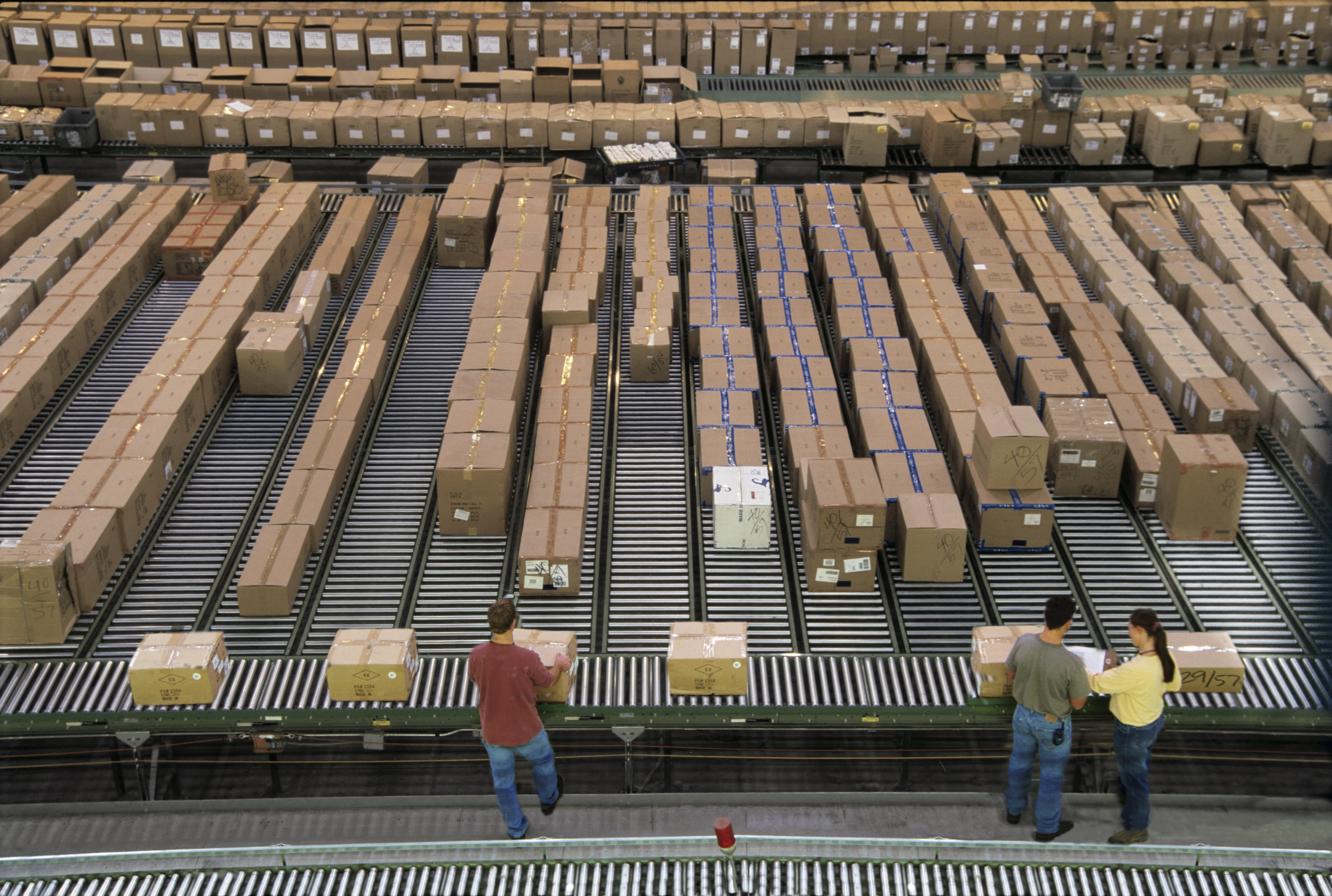



As e-commerce volumes surge and same-day delivery becomes the new consumer standard, last-mile parcel hubs have emerged as critical infrastructure within the UK logistics ecosystem. These smaller, urban distribution centres act as the final link in the delivery chain—bridging regional depots and end customers.
For investors, developers, and landlords, urban and suburban parcel hubs represent one of the most resilient, high-demand asset classes in the modern property market. Fraser Bond advises logistics investors and asset owners on identifying, leasing, and repositioning properties for last-mile use across London and the wider UK.
A last-mile logistics hub is typically a light-industrial or repurposed commercial unit (10 000–80 000 sq ft) located within 5–10 miles of dense urban centres.
Its function is to sort, stage, and dispatch parcels rapidly using vans, e-bikes, or cargo scooters for same-day or next-day delivery.
Typical occupiers include national parcel operators, 3PLs, grocery delivery firms, and e-commerce retailers:
Amazon Logistics | DPD | Evri | Royal Mail | UPS | FedEx | Ocado Zoom | Zedify | Gopuff | Deliveroo
| Attribute | Requirement | Fraser Bond Comment |
|---|---|---|
| Urban Proximity | Within 30 min drive to city centre | London, Manchester, Birmingham most active |
| Accessibility | Direct access to A-roads or ring roads | Crucial for delivery time efficiency |
| Ceiling Height & Loading | 6–10 m eaves; multiple roller doors | Enables high parcel throughput |
| Power Capacity | 200 kVA + for EV charging and automation | EV-ready power is now a differentiator |
| Parking & Yard Depth | Space for vans / e-bikes / HGV drop | Consider multi-storey or decked parking in constrained urban sites |
| Planning Use Class | B8 (Storage & Distribution) / E(g)(iii) | Confirm compatibility or apply for variation |
Repurposing existing retail or light-industrial units can be highly cost-effective compared with greenfield development, especially within London’s constrained logistics zones.
Traditional FRI Lease (5–15 Years)
Favoured by institutional investors.
Indexed or stepped rent review, typically £18–£35 psf in Greater London.
Short-Term Flexible Lease (2–5 Years)
Used by agile or pilot operators.
Higher rent but faster occupation and exit flexibility.
Management or Revenue-Share Agreement
Landlord retains ownership; operator manages hub and pays turnover rent.
Joint-Venture Development
For brownfield or car-park conversions, landlord and operator co-invest in build and infrastructure.
Lease terms should address: power upgrades, yard access, EV charger installation rights, signage, out-of-hours operations, and environmental obligations.
Planning Permission – Confirm change of use for last-mile logistics; transport assessment may be required.
Noise & Traffic Mitigation – Acoustic barriers, routing, scheduling to minimise neighbourhood impact.
Sustainability Features – Solar PV, EV charging bays, green roofs, water recycling, BREEAM Very Good +.
Digital Integration – Smart parcel tracking, IoT sensors, automated sorting.
Energy Resilience – On-site battery storage or renewable integration increasingly demanded by occupiers.
Local authorities, particularly in London, support zero-emission logistics and may offer funding or planning incentives for hubs using e-bikes and electric vans.
London Dominance – Zones such as Park Royal, Croydon, Edmonton, and Beckton are key nodes for parcel logistics.
Regional Expansion – Urban logistics networks expanding in Manchester, Bristol, Glasgow, Leeds.
Rising Rents & Land Scarcity – Prime London industrial rents grew > 10 % YoY; multi-storey urban logistics schemes gaining traction.
Investor Appetite – Institutional capital targeting last-mile assets for long-term inflation-linked income.
Mixed-Use Integration – Developers now embed logistics at ground level beneath residential or office towers.
Strong, stable tenant demand with limited vacancy risk
Indexed rental growth from logistics inflation
ESG-aligned operations attract funding and occupiers
Redevelopment optionality for mixed-use or multi-storey schemes
Long-term alignment with government sustainability targets
Fraser Bond provides end-to-end advisory for investors, landlords, and developers:
Site Identification & Appraisal – Find urban-edge sites with logistics conversion potential.
Feasibility & Financial Modelling – Forecast rent, yield, and return on retrofit or redevelopment.
Lease & Commercial Negotiation – Secure robust, indexed lease terms and operator guarantees.
Planning & ESG Advisory – Navigate permissions, sustainability certification, and transport strategy.
Portfolio Scaling & Exit Strategy – Aggregate assets into income portfolios for refinancing or sale.
To explore last-mile logistics parcel hub opportunities in London or across the UK, contact FraserBond.com for tailored investment and leasing advisory.